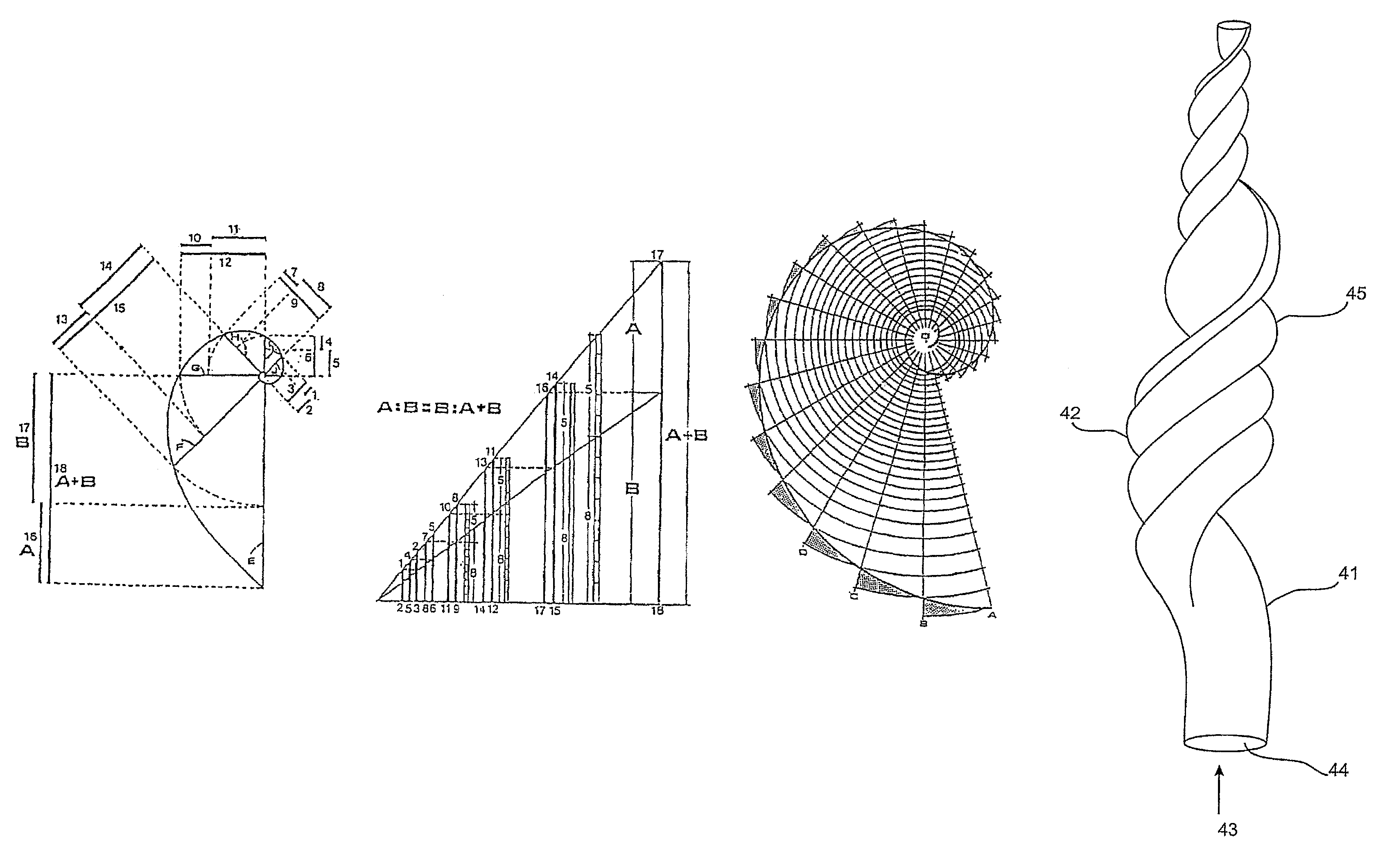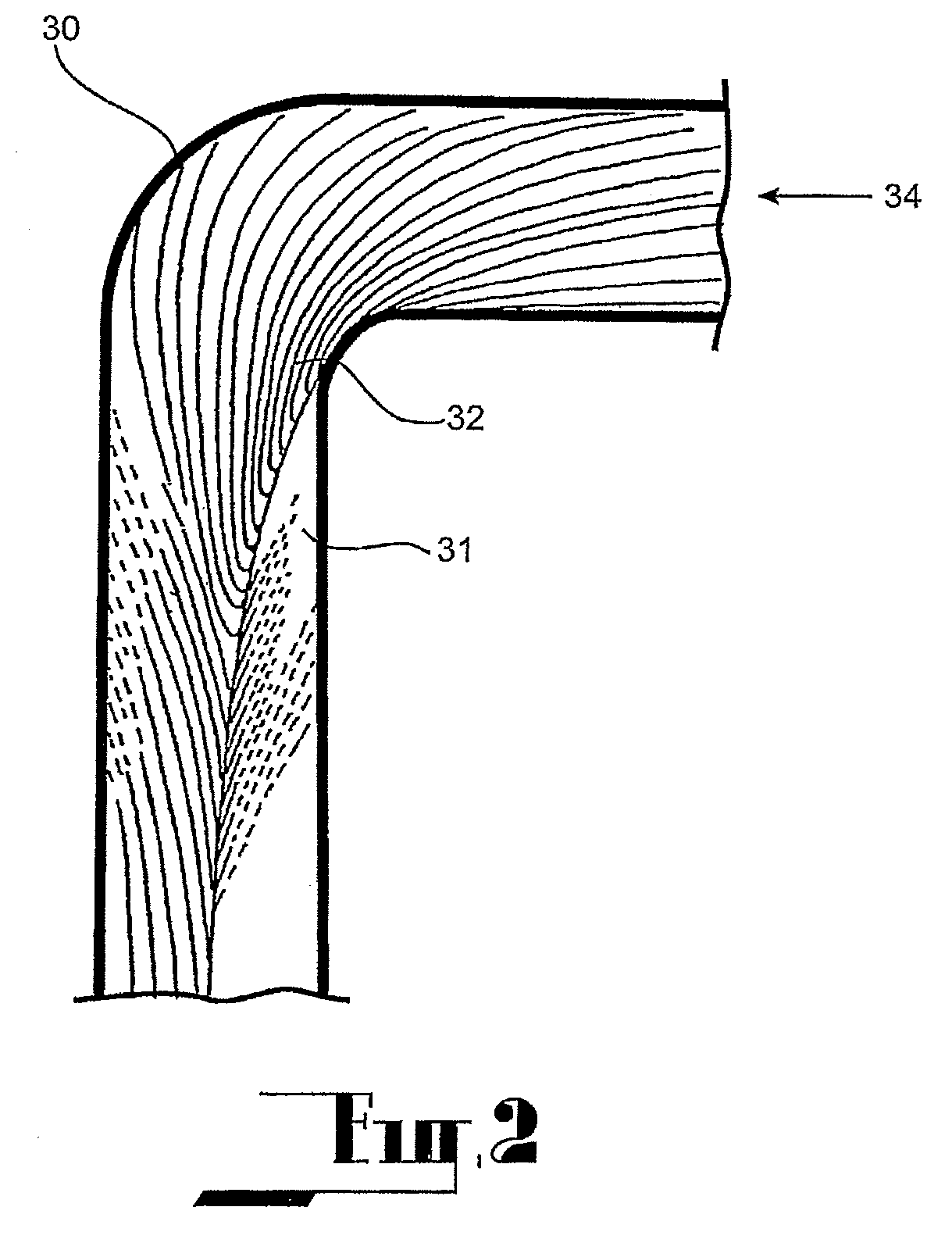Sound attenuator
a sound attenuator and sound technology, applied in the field of ducts, can solve the problems of reducing the operational efficiency of the duct, noise, sedimentation of suspended solids, and reducing efficiency, so as to facilitate a change of direction and reduce the turbulence of fluid flow
- Summary
- Abstract
- Description
- Claims
- Application Information
AI Technical Summary
Benefits of technology
Problems solved by technology
Method used
Image
Examples
first embodiment
[0037]A first embodiment shown in FIG. 3 and FIG. 4 relates to a duct section which facilitates the change in direction of fluid or fluid pathways within plumbing or ducting systems such as water pipes or air conditioning systems.
[0038]As can be seen in FIG. 2, a conventional right angle bend (30) in pipe or ducting results in fluid flow that is less than optimal. Streamlines show a low-pressure area (31) and a high-pressure area (32). This can result in turbulence, cavitation, sedimentation and corrosion as well as increasing energy losses in the fluid movement (34). This can result in increased pumping costs and reduced pressure at the outlet.
[0039]This form of the embodiment shown in FIGS. 3 and 4 provides a duct (36) specifically designed to induce the fluid (34) to move in accordance with the laws of Nature whilst changing its direction. As mentioned previously, the duct is designed having a pathway having a curvature (37) substantially or in greater part conforming to that of ...
second embodiment
[0041]A second embodiment shown in FIGS. 5 and 6 relates to a duct (41) providing a twisting pathway (42) for fluids where the pathway conforms to the Golden Section or Ratio. As fluid (43) flows through the inside (44) of the duct, it is urged to conform to natural flow spiral characteristics, which minimize extraneous turbulence.
[0042]In an adaptation of the second embodiment, there is provided a flow controller having the form as shown in FIG. 5 and 6, the flow controller adapted to be located within a fluid pathway. In this form the flow of the fluid is around the outside of the flow controller. It is therefore the external surface of the flow controller which is active and is designed to conform to the Golden Section. However, in this adaptation, the flow controller may be hollow which allows the fluid to flow through it internally.
third embodiment
[0043]A third embodiment shown in FIG. 7 depicts a duct (51) providing a twisting pathway (52) for fluids conforming to the Golden Section or Ratio. As fluid (53) flows through the inside or outside of the duct it is urged to conform to natural flow spiral characteristics, which minimize extraneous turbulence. Additionally, the diagram shows the fluid's spiralling flow path on the fluid as it flows.
[0044]An example of a duct constructed in accordance with the third embodiment is a cardiovascular stent. Conventionally, stents have been cylindrical in shape. While intended to be permanently placed within the patient, it has been found in many cases, that fatty deposits are formed within the stent over a period of time, requiring their replacement. It is believed that this build up is caused as a result of the turbulence in the stent. A stent constructed in accordance with the third embodiment will avoid this turbulent flow and thereby prevent the formation of fatty deposits in the ste...
PUM
 Login to View More
Login to View More Abstract
Description
Claims
Application Information
 Login to View More
Login to View More - R&D
- Intellectual Property
- Life Sciences
- Materials
- Tech Scout
- Unparalleled Data Quality
- Higher Quality Content
- 60% Fewer Hallucinations
Browse by: Latest US Patents, China's latest patents, Technical Efficacy Thesaurus, Application Domain, Technology Topic, Popular Technical Reports.
© 2025 PatSnap. All rights reserved.Legal|Privacy policy|Modern Slavery Act Transparency Statement|Sitemap|About US| Contact US: help@patsnap.com



